Engaging Employees in a Work from Home Reality
THE CLOSE OF 2020 IS ONE THAT CANADIANS WILL WELCOME WITH OPEN ARMS. WITH RECENT GOOD NEWS ABOUT PENDING COVID-19 VACCINE APPROVALS AND DISTRIBUTION PLANS, A GLIMMER OF HOPE IS WHAT’S LEADING US INTO 2021. NEVER HAVE WE NEEDED IT MORE.
Yet, as we look back at 2020, while it’s easy to focus on the challenges there are so many lessons and insights to be gleaned. With regards to communications, one area that has been a bright spot for both the Agnostic team and our clients is the prioritization of employees.
To close out this year, Agnostic and our sister agency - Proof Experiences - polled our clients to find out how employees were faring while working remotely and to gain insight into priorities for communicators as we move into 2021.
THE GREAT PIVOT
Looking back to March 2020, the majority of our clients (74%) had a formal internal communications strategy in place, yet that plan focused on a workforce that largely operated out of corporate offices. At the beginning of the pandemic, there was a scramble to figure out how to keep business going with an entire workforce working remotely.
While many of us thought this would be a short-term challenge, organizations have now come to the conclusion that this way of working is likely here to stay, in one form or another, even beyond the roll-out of a vaccination.
Once the initial shock of a dispersed workforce was over, the next challenge became how to not just communicate with employees, sharing information about the pandemic and the company’s response, but how to continue keeping a workforce motivated, positive and engaged. This became priority one, all while understanding that employees were constantly dealing with one of the biggest worries possible: Am I going to have a job tomorrow?
PLANNING FOR KEY COMMUNICATION CHALLENGES
I recently participated in a webinar discussing the results of our poll and chatting with industry leaders - including Nina Abdelmessih, Chief of Operations and External Communications, BCG, Daria Hill, AVP Corporate Communications & Sponsorships, Interac Corp, and Kelly Power, SVP Client Service, Proof Experiences - about their own internal communications priorities for the new year. The barriers facing businesses in keeping employees engaged are varied, but - as our poll and discussion indicated - there are a number of similar themes:
Tools - not having the right tools in place to engage with employees or not understanding the full possibility of existing tools
Communications fatigue - competing for employees’ attention due to an overload of information both from work and the news cycle.
Time - both for employees juggling work, meetings and home life as well as businesses taking time to understand and implement new methods of communication.
Work environment - dealing with vastly different work environments from person-to-person, including access to strong internet connections.
Mental Health - including burnout, pandemic fatigue, work overload and low morale
Building a Strong Remote Culture
As we move forward, there is another challenge that all companies need to recognize and future proof against. Once we get back to whatever new reality awaits us we are likely to see a talent race as companies scale back to pre-pandemic work levels after rounds of layoffs and furloughs.
In fact, a recent study by the Hays Salary Guide found that 49 per cent of employees are seriously considering leaving their current role, a nine point jump over 2019. Reduced social interaction, increased workload and a lack of well-being and mental health support being some of the key concerns cited by those surveyed.
Companies who retain top employees are those who treat them as the number one stakeholder. Those organizations that will see continued staff retention, growth and a strong culture are those that prioritize transparency, cadence of communication and employees at all levels to own employee engagement.
Some of the trends we’re seeing and that our panelists described include:
Listening: Creating an environment where employees have the chance to provide feedback and input on internal communications activities while ensuring that regular pulse checks are conducted on overall morale and well being or to even see if employees need more engagement.
Prioritizing mental health: Pandemic fatigue will continue to be a factor as we enter year two. Actively encouraging employees to take care of mental health, instituting programming and amplifying benefits will be key to ensuring the well being of the team.
Flexibility: When it comes to working from home, we’ve seen in our poll and in other research, that the model is working but the key to its success as we move forward is flexibility. Working from home allows greater time with family, less commute time, financial savings from not buying coffee or lunch every day. There are a lot of perks. But we also know that there are some who thrive with a clearly distinct line between work and home.
Personalization: While town halls and virtual events are a necessary part of remote working, we see an uptick in morale when we’re able to truly give something to say “We see you, you are valuable and we wouldn’t be able to make it through this without you.” Whether that is recognizing a work anniversary, a new home, a new baby, birthday or even recognizing a job well-done.
Funding employee engagement: To truly engage employees, we must fund internal communications. Our panelists noted that one of the key ways they’ve identified funding is to look at where previously allocated budgets are not being spent - whether that is travel and entertainment or even in-office food and catering - and redeploy that to the internal communications function.
At the end of the day, remote work will be a part of the knowledge industry for the foreseeable future and the key to engaging employees is to prioritize them as the key stakeholder, be transparent, authentic and make sure employees feel heard.
